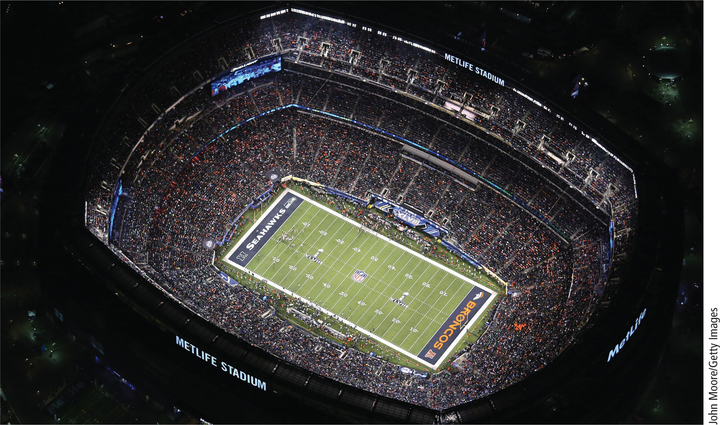7.1 Data for Decisions 7
 und
und
- 7.1 Sampling
- 7.2 Bad Sampling Methods
- 7.3 Simple Random Samples
- 7.4 Cautions About Sample Surveys
- 7.5 Experiments
- 7.6 Experiments Versus Observational Studies
- 7.7 Inference: From Sample to Population
The day after Super Bowl XLVIII in 2014, it was announced that the game was viewed by an estimated 111.5 million viewers, making that game the most-watched show in U.S. history. A politician looks at the latest poll to decide if a new strategy or policy will have enough support, or if he would win if an election were held that day. A doctor looks at a study in a medical journal to decide if there is strong enough evidence in a new approach to treating a disease for her to recommend it to a patient. Every day that we read a newspaper like USA Today, we encounter the results of some kind of poll or study that affects commerce, politics, or the growth of knowledge. Clearly, data can be used to help answer a huge variety of questions in our world.
However, we also have to think about how data are produced in the first place. We can analyze data using the most sophisticated techniques, but if the data are not reliable, our conclusions will be baseless. In this chapter, we explore three ways of collecting data—surveys, experiments, and observational studies—and we examine the reliability of the data produced in each of these situations. The chapter’s concluding section discusses statistical inference, which allows us to go beyond describing a sample to making an estimate about the entire population from which our sample comes and to quantify our level of confidence when doing so.